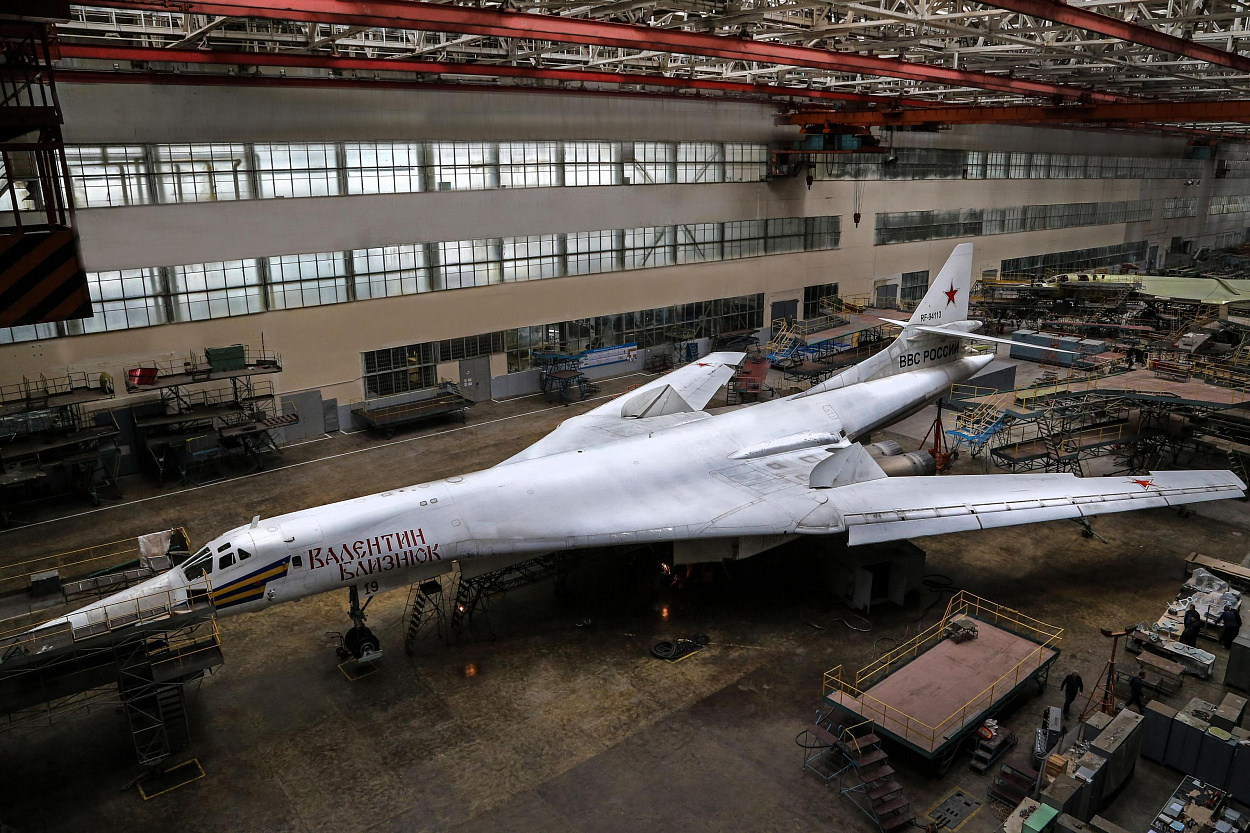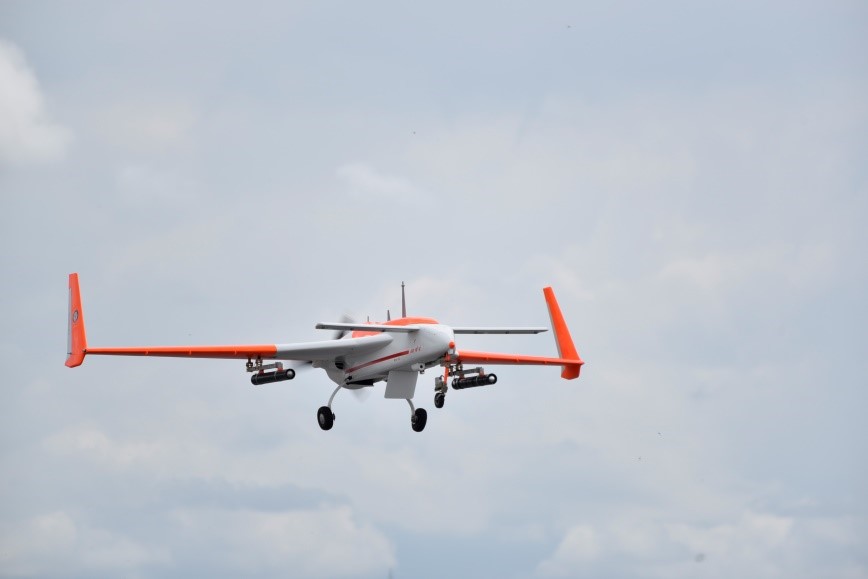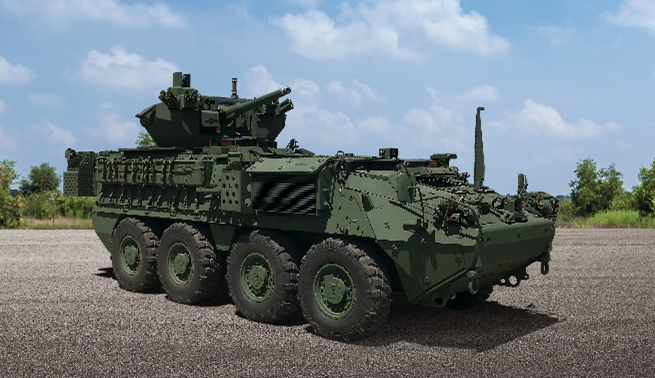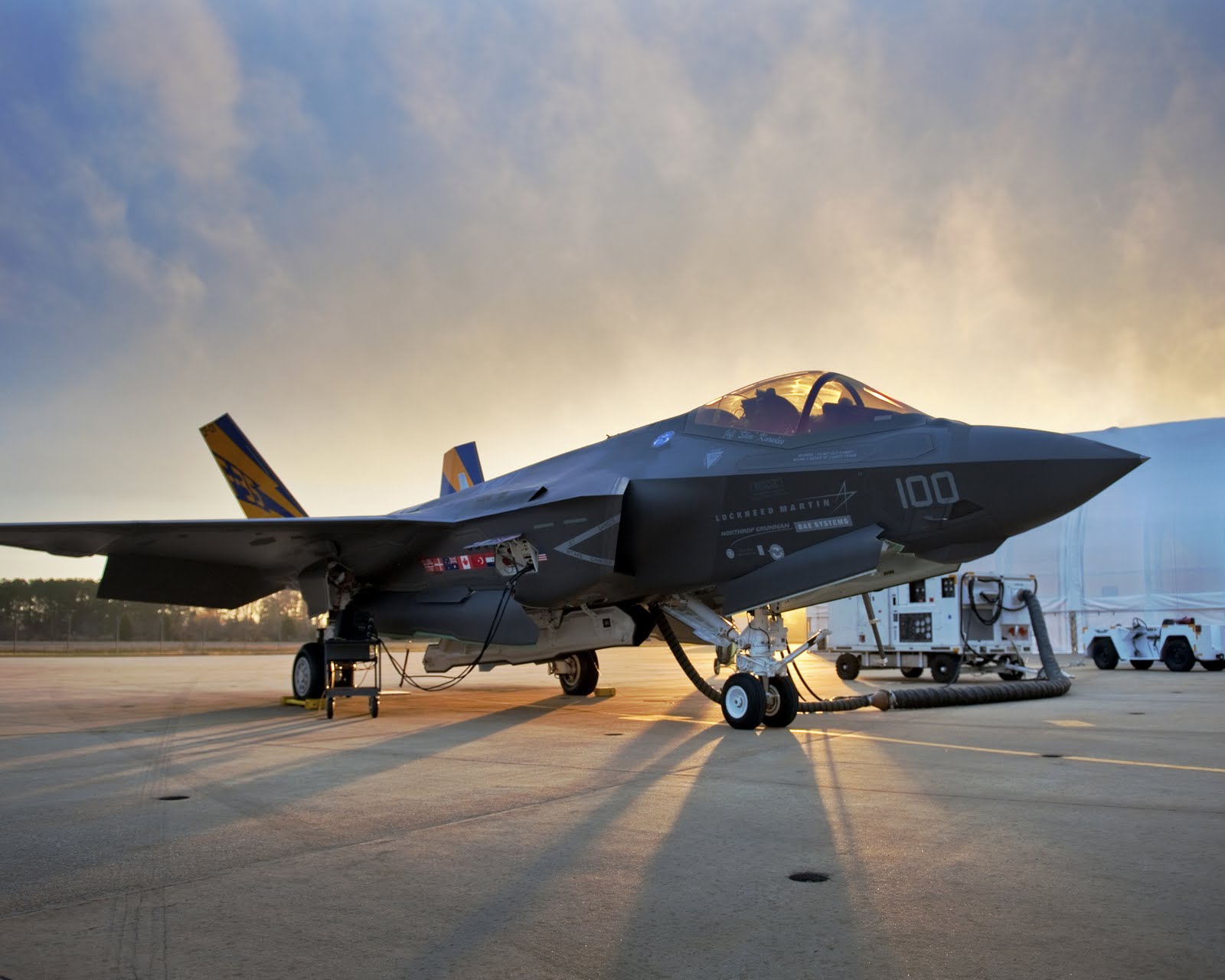Monthly Archives: January 2025
SOURCE: IDRW.ORG


A significant report by the French think tank, the French Institute of International Relations (Ifri), titled “The Future of Air Superiority: Mastering the Skies in High Intensity,” has cast a spotlight on the limitations of the French model, particularly the Rafale fighter jet, in contemporary high-intensity warfare scenarios. Authored by two experts from the French Air and Space Forces, the 114-page document was highlighted by the French media outlet L’Opinion.
The report suggests that the “French model is reaching its limits” when it comes to functioning effectively within a coalition in high-intensity conflicts. French pilots flying Rafale jets have encountered significant difficulties when pitted against fifth-generation fighters like the American F-35 in exercises. The report points out that “the combat mission against stealth fighters is impossible to win with the current state of the sensors.”
Continue readingSOURCE: IDRW.ORG


In a strategic move that could significantly enhance India’s air force capabilities, French aerospace company Safran has expressed its readiness to develop a high-thrust 110kN engine for India’s Advanced Medium Combat Aircraft (AMCA) program. More intriguingly, Safran has proposed that this new engine could also be retrofitted into India’s existing and future Rafale fleets, promising substantial performance upgrades.
Safran’s proposal comes with the assurance that the dimensions of the new 110kN engine will be similar to the current M-88 engines that power the Rafale jets. This compatibility means that the Indian Air Force (IAF) and the Indian Navy would not require major modifications to the airframe or the engine bay of the Rafale to accommodate the new powerplant. This aspect is particularly appealing as it bypasses the need for extensive redesign or structural changes, thereby keeping costs down and maintenance straightforward.
Continue readingSOURCE: AFI

The Gas Turbine Research Establishment (GTRE), an integral part of India’s Defence Research and Development Organisation (DRDO), currently boasts a workforce of 227 employees dedicated to the advancement of gas turbine technology. With the ambitious Advanced Medium Combat Aircraft (AMCA) engine program on the horizon, GTRE is preparing for a significant recruitment push.
The AMCA project, central to India’s fifth-generation fighter jet aspirations, has been a focal point for technological self-reliance in aerospace engineering. GTRE’s role in this project is to develop an indigenous high-thrust engine, which is expected to be a collaboration with a foreign contractor. The specifics of this collaboration are still under negotiation, but the anticipation is high, with potential partners including global giants like Safran, Rolls-Royce, and General Electric.
Continue readingSOURCE: AFI


The realm of aerospace technology, particularly the development and enhancement of fighter jets, is an arena where nations often push the boundaries of innovation. Reverse engineering has historically been a method employed by various countries to leapfrog technological gaps and bolster their military capabilities. However, India’s approach to reverse engineering fighter jets has been notably cautious, shaped by both its capabilities and its commitment to international Intellectual Property Rights (IPR) laws.
Modern fighter jets are complex systems integrating advanced materials, aerodynamics, avionics, and propulsion technologies. The process of reverse engineering such sophisticated equipment requires not just access to the hardware but also deep expertise in multiple engineering disciplines. India has made significant strides in indigenous aircraft development, like the Tejas Light Combat Aircraft, but the journey from reverse engineering to full indigenous production has been fraught with challenges. The technical intricacies of jet engines, avionics, and stealth technology, for instance, have proven particularly difficult to master through reverse engineering alone.
Continue readingSOURCE: AFI


In the realm of global military aviation, only a select few nations possess fleets of strategic bombers (SB), which are designed for long-range, deep-penetration strikes into enemy territory. Currently, these nations are the United States, Russia, and China. Notably, India, despite its significant military prowess and strategic interests, particularly in light of the regional dynamics with China, has not ventured into this domain.
India’s military doctrine has historically prioritized regional defense rather than global power projection, which strategic bombers would serve. The Indian Air Force (IAF) has focused on multi-role fighters that can handle a variety of missions from air superiority to ground attack, aligning with India’s defense needs against its immediate neighbors. The acquisition of strategic bombers would represent a significant doctrinal shift, requiring not only a change in military strategy but also substantial financial investment. Strategic bombers are expensive to acquire, operate, and maintain, and with India’s defense budget stretched across multiple modernization programs, the cost-benefit analysis has so far not favored such a move.
Continue readingSOURCE: AFI


In a gesture of goodwill and military cooperation, Pakistan has delivered an FT-7P fighter aircraft to the Sri Lankan Air Force (SLAF) in January 2025. This aircraft, a Chinese-manufactured J-7 in its export trainer configuration, was provided as a grant, highlighting the ongoing military ties between the two nations.
The FT-7P, essentially a dual-seat training variant of the F-7, has been a part of Pakistan’s Air Force inventory for training purposes. With the introduction of the more advanced JF-17B dual-seat trainer aircraft, Pakistan found itself with surplus FT-7 aircraft. These planes were previously used to train pilots destined for the F-7PG fleet, for weapons tactics training, and as adversary aircraft in simulated combat scenarios.
Continue readingSOURCE: AFI


In a significant stride towards enhancing military cooperation, the Indian Air Force (IAF) and the Royal Air Force (RAF) convened for the Executive Steering Group Meeting, also known as Air Staff Talks, in London on January 28 and 29, 2025. The two-day event was a platform for reinforcing the defence relationship between the two nations, focusing on joint training, the exchange of ideas, and professional military education.
The discussions were co-chaired by Air Vice-Marshal Suraya Marshall CBE from the RAF and Air Vice-Marshal Prajual Singh VM from the IAF. This meeting underscored the commitment of both air forces to not only maintain but also expand their mutual engagements in various military domains.
Continue readingSOURCE: RAUNAK KUNDE / NEWS BEAT / IDRW.ORG


In a significant development for India’s defence exports, an informed source close to idrw.org has revealed that Saudi Arabia could be the next customer for the Advanced Towed Artillery Gun System (ATAGS) 155×52, developed by Bharat Forge. This news comes after Saudi Arabia previously tested the Bharat-52, another 155mm, 52 calibre towed howitzer from Bharat Forge, which did not lead to a finalized deal.
The ATAGS, a product of collaboration between the Defence Research and Development Organisation (DRDO) and Bharat Forge, represents a leap in indigenous artillery technology. Designed to meet the Indian Army’s requirements for a modern, high-performance howitzer, the ATAGS features an extended range, sophisticated fire control systems, and enhanced mobility compared to its predecessors.
Continue readingSOURCE: RAUNAK KUNDE / NEWS BEAT / IDRW.ORG
)

Hindustan Aeronautics Limited (HAL) has marked a pivotal moment in its ambitious Combat Air Teaming System (CATS) programme with the successful engine ground run of the CATS-Warrior full-scale demonstrator. According to insights shared with idrw.org, HAL is now gearing up to commence taxi trials and is eyeing the first flight within the next few weeks, accelerating the development of this loyal wingman UCAV.
Sources have revealed to idrw.org that HAL is in the process of initiating taxi trials, a crucial step before the aircraft can take to the skies. These trials are essential to test the aircraft’s ground handling characteristics, control systems, and overall system integration.
Continue readingSOURCE: RAUNAK KUNDE / NEWS BEAT / IDRW.ORG


The Aeronautical Development Establishment (ADE), a key laboratory under the Defence Research and Development Organisation (DRDO), is taking a significant step toward enhancing the combat capabilities of the Archer Short-Range Unmanned Aerial Vehicle (SRUAV). Plans are underway to integrate the DRDO-developed Smart Anti-Airfield Weapon (SAAW) into the Archer SRUAV, making it a formidable platform for precision-strike missions.
The Smart Anti-Airfield Weapon (SAAW) is a long-range, precision-guided munition designed for anti-airfield operations. Weighing approximately 125 kg, it boasts a range of at least 100 km, allowing it to neutralize critical airfield assets such as runways, hangars, and radar installations from a safe distance. Its lightweight and compact design makes it an ideal payload for unmanned platforms like the Archer SRUAV.
Continue readingSOURCE: AFI


The Indian Army’s evaluation of the Stryker Armored Personnel Carrier (APC) has reached its conclusion, with trials being conducted in the challenging high-altitude terrain of Ladakh in September 2024, according to recent media reports.
The trials took place in Ladakh, a region known for its extreme climatic conditions and high-altitude challenges, providing a rigorous test for the Stryker’s capabilities. The evaluation spanned three weeks, where the Stryker was subjected to a variety of tests to gauge its mobility, durability, and combat effectiveness in an environment similar to potential operational areas along India’s borders.
Continue readingSOURCE: AFI


In a recent feature, Russian media outlet Sputnik has extolled the capabilities of the Su-57, Russia’s advanced fifth-generation fighter jet, positioning it as a formidable force in modern aerial warfare. According to Sputnik, the Su-57, which celebrated its maiden flight 15 years ago, is not just a match but an outright superior to its international counterparts.
Sputnik describes the Su-57 as a dual-role aircraft, adept at both attack and fighter missions. Its design incorporates stealth technology, making it “nearly invisible” to enemy radar systems while boasting exceptional maneuverability. The jet is claimed to have a service ceiling of 20 kilometers, a range extending up to 5,500 kilometers, and a top speed reaching 2,470 kilometers per hour, which positions it as one of the fastest in its class.
Continue readingSOURCE: AFI


In this year’s Aero India show, set to be held in Bengaluru, the participation of the Indian Air Force’s acclaimed Sarang display team hangs in the balance. The uncertainty stems from the grounding of all 330 HAL Dhruv advanced light helicopters (ALH Dhruv) after a concerning crash in January.
Sarang, renowned for its intricate and visually stunning aerial maneuvers, has been a staple attraction at Aero India, contributing to the spectacle that draws aviation enthusiasts from around the globe. This biennial event has traditionally featured both Sarang and the Suryakiran aerobatic team, showcasing India’s aerial prowess alongside international teams.
Continue readingSOURCE: AFI


In a significant upgrade to their combat gear, Indian Army troops deployed at the strategically vital Uri sector in Jammu and Kashmir have been observed sporting new Armasen plate carriers alongside advanced Level III+ Advanced Combat Helmets (ACH). This development points to a continuing effort by the Indian military to bolster the protection and operational effectiveness of its soldiers in forward areas.
The troops were equipped with the Armasen plate carriers, known for their robust design and ergonomic features. These carriers are designed to accommodate various types of ballistic plates, offering flexibility in terms of protection levels. The Armasen gear, particularly the SF RIG (Special Forces Rapid Interchangeable Gear) and GRIP Combat Belt, is noted for its compatibility with both standard and custom ballistic plates, enhancing mobility and comfort in combat situations.
Continue readingSOURCE: IDRW.ORG


In a notable development for this year’s Aero India air show, the United States Air Force has officially confirmed through its website that flight demonstrations of the F-35A Lightning II will not take place at Aero India 2025, corroborating an earlier report by idrw.org. However, in a twist of events, ‘The Hindu’ has clarified that while the F-35 fighters will indeed participate in the event, they will be featured solely in a static display, with no aerial maneuvers planned.
Reports from ‘The Hindu’ indicate that two F-35s will be present at the air show, but they will remain grounded, offering visitors an opportunity to observe the aircraft up close rather than in flight. This decision aligns with the information previously shared by idrw.org, which suggested that no flight demonstrations were scheduled for the F-35A at this year’s event.
Continue reading